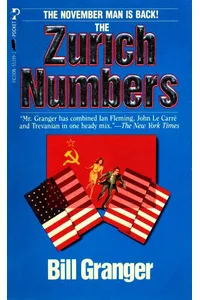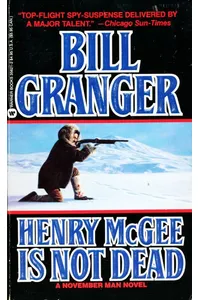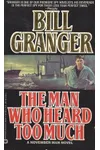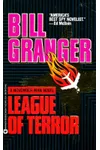Step into the shadowy world of the November Man, where Cold War espionage, moral ambiguity, and heart-pounding action collide! Bill Granger’s November Man series, spanning 13 gripping spy thrillers from 1979 to 1993, follows Devereaux, a brilliant yet world-weary CIA agent codenamed November. With intricate plots and a gritty take on the intelligence game, this series is a must-read for fans of classic spy fiction.
Devereaux isn’t your typical hero—he’s a lethal operative navigating a treacherous landscape of double-crosses and global intrigue. Granger’s knack for blending noir atmosphere with real-world tensions makes the series a standout in the spy thriller genre. Ready to uncover the secrets of November Man? Let’s dive in!
How November Man Began
Bill Granger, a Chicago journalist turned novelist, launched the November Man series in 1979 with Code Name November (later retitled The November Man). Drawing on his reporting experience, including interviews with Vietnam War veterans and coverage of Northern Ireland’s violence, Granger crafted a realistic espionage world. His goal? To capture the gritty, morally complex reality of Cold War spying, inspired by the era’s CIA-KGB rivalries and global unrest.
Granger’s background lent authenticity to Devereaux’s missions, with the character working for the secretive R Section, a watchdog agency monitoring the CIA. The series’ debut gained attention when its plot eerily mirrored real-world events, cementing Granger’s reputation as a master of “reality fiction.”
The Heart of November Man
The series kicks off with The November Man (1979), where Devereaux, a retired agent, is pulled back to foil an IRA plot to assassinate a British lord. Its dark, cynical tone and twist-filled narrative set the stage for the series. There Are No Spies (1987), the seventh book, sees Devereaux hunting a mole in R Section, weaving a complex puzzle of betrayal and deception. The Infant of Prague (1987) explores global conspiracies with vibrant characters, while Burning the Apostle (1993) tackles eco-terrorism in a nuclear disaster plot near Chicago.
Granger’s themes delve into the toll of espionage—Devereaux’s isolation, the blurred lines between loyalty and betrayal, and the human cost of covert operations. Set against Cold War backdrops like Berlin and the Irish Sea, the series blends lean, journalistic prose with noir grit. Fans praise its fast-paced surprises and Devereaux’s compelling mix of cold efficiency and reluctant humanity.
The series also introduces recurring figures like Rita Macklin, a gutsy journalist and Devereaux’s love interest, and Henry McGee, a cunning villain whose schemes challenge Devereaux’s resolve. These dynamics add emotional depth to the high-stakes action, making each book a thrilling yet introspective read.
Why November Man Resonates
The November Man series carved a niche in spy fiction with its unflinching look at espionage’s darker side. While not as polished as Le Carré, Granger’s work rivals the genre’s best for its authenticity and pace. The 2014 film adaptation of There Are No Spies, starring Pierce Brosnan, brought renewed interest, though fans argue the books’ depth outshines the movie. Granger’s influence lingers in modern thrillers, inspiring writers who explore morally gray protagonists.
Despite many titles being out of print, the series retains a cult following for its raw intensity and historical insight. Readers on platforms like Goodreads celebrate its “grey, dirty” realism, with some devouring entire books in a single sitting. For Cold War enthusiasts or spy fiction lovers, November Man remains a hidden gem.
- Publication Years: 1979–1993
- Number of Books: 13
- Notable Recognition: Public Murders (Granger’s non-series novel) won the 1981 Edgar Award
Dust off The November Man and plunge into Devereaux’s world of spies, secrets, and suspense. Whether you’re a thriller veteran or a curious newcomer, this series promises a wild ride through the Cold War’s darkest corners!












